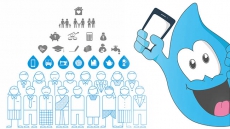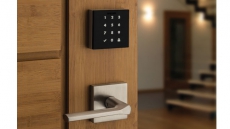Devices and features are not always designed keeping seniors in mind, but with more and more older adults becoming tech-savvy, designers are beginning to create products in alignment with their understanding and requirements.
Technology has drastically transformed present day lives by rooting itself in our homes, offices and social settings. In the course of one generation only, technology has taken a phenomenal leap in innovation and usage, therefore an inclusive integration of various demographics is crucial to ensure an all rounded growth of our society. Senior adults are one such demographic that are benefitting from this migration to the tech world, however, with a bit of support and assistance we can bag a wider cohort of their population that for various reasons faces a disconnect with technology.

Dr. Andrew Sixsmith, scientific director at AGE-WELL Network of Centres of Excellence, and professor in the Department of Gerontology at Simon Fraser University.
“There is a stereotypical view that older people don’t like change and are technophobic. This is not the case. There are many seniors who I have spoken to personally who are very tech-savvy and interested in the latest gadgets and apps,” says Dr. Andrew Sixsmith, Scientific Director at AGE-WELL Network of Centres of Excellence, and professor in the Department of Gerontology at Simon Fraser University. Statistically, the gap between technology users that are seniors and those under the age of 65, is definitely wide but what’s promising is a keen interest and fascination on the part of many older people with technology. So what is it that constitutes the digital divide and how can we resolve it? Elaborating on the matter, Dr. Sixsmith says “this is probably more due to financial reasons than just their age; older people are often amongst the poorest sections of the population.”
The continuous upgradation of technology means users have to be actively immersed to enhance their experience and exposure, and its rapid transformation might appear to be a gruelling task for seniors and others to cope with. Barriers such as language and factors such as psychological and physical, can further accentuate the digital divide. “We need to make technologies easier to use – for example, with simpler control or even by speaking to your computer. We also need to provide training and support to seniors who may not have much experience in using technology,” suggests Dr. Sixsmith.
Wearable technologies, online applications and games such as Lumosity empower seniors to independently monitor their health and daily lifestyle such as sleeping pattern and heart rate. However, a significant portion of the population still remains disconnected. “The world we live in has primarily been designed by younger people for younger people, whether this is the cities and buildings we live in or the everyday technologies we use,” clarifies Dr. Sixsmith. Often, technology comes overloaded with several functions and complicated interfaces, lacking inclusivity of various demographics. Devices and features are not always designed keeping seniors in mind, but with more and more older adults becoming tech-savvy, designers are beginning to create and mould products in alignment with their understanding and requirement.

In Vancouver, many organizations such as the Vancouver Public Library (VPL) are working to eliminate this divide by offering a wide range of programmes at various branches across the city. From training seniors about how to setup an email account, getting online and protecting their privacy to shooting a film and creating podcasts, VPL digital technology training is providing the support senior adults need in order to become more independent. “It’s really important I think for seniors to learn how to use technology if they are not familiar with it. It’s a really critical course skill now, for just being part of the world,” says Anna O’Shea, manager of programming and learning at VPL.
The transformative capacity of technology transmits across all age groups. For seniors the influence is even more profound because it gives them freedom to monitor and manage their well-being such as food, medication and exercise while also reducing social isolation.
“A lot of seniors are particularly interested in being in touch and engaged,” explains O’Shea, adding, “I think seniors crave that contact and that ability to connect with people with similar interests or perhaps with family members who are far away.” O’Shea notes this is as one of the key reasons why older adults enroll in the VPL digital technology training classes.

In BC, eGurus is another tutoring company that is meeting the demand of seniors to integrate with technology by offering in-home and online tutoring classes based on a person’s ability level. Meanwhile, AGE-WELL is working on various exciting projects including social robots that will help individuals with cognitive impairment cope better.
Technology can appear to be a daunting task but only until we remain distant from it. With regular usage and understanding, it can lead to an independent lifestyle with multiple benefits. If you are or if you know a senior who could benefit from technology, help them by either leading them to a support and training group, or introduce the basics to them at home.






